Antonia Angress wrote in Sirens and Muses, “I don’t believe in God. I don’t believe in capitalism. But I believe in art. I really do. I think it’s a tool for meaningful social change.”
The definition of bonafide is “sincerely” and “in good faith.”
Halle, Sarah, Rik, and Jahliya, the creators, decided to ask the question: what is bonafide? To best answer the question, they gathered a group of some of Toronto’s creatives and hosted an event for 600 people last Friday, March 10th.
“What we’re trying to do is kind of change the narrative or the perception for a lot of people. I think it’s really cool to have a space where people who maybe aren’t creatives themselves or don’t go to a lot of galleries can come to this organized chaos and experience different forms of art versus going to very traditional galleries and seeing everything in one environment.”
They wanted to preserve values that are often overlooked in the traditional art world. One of these is ownership. When an artist is represented or presented in a gallery, the gallery frequently owns the art or retains a portion of the profits. An artist rarely owns their entire work or collects all of their profits. Rik mentioned that “a lot of physical spaces have been either taken down or started to lose funding” and that they wanted to create an interactive space for all artists of various mediums.
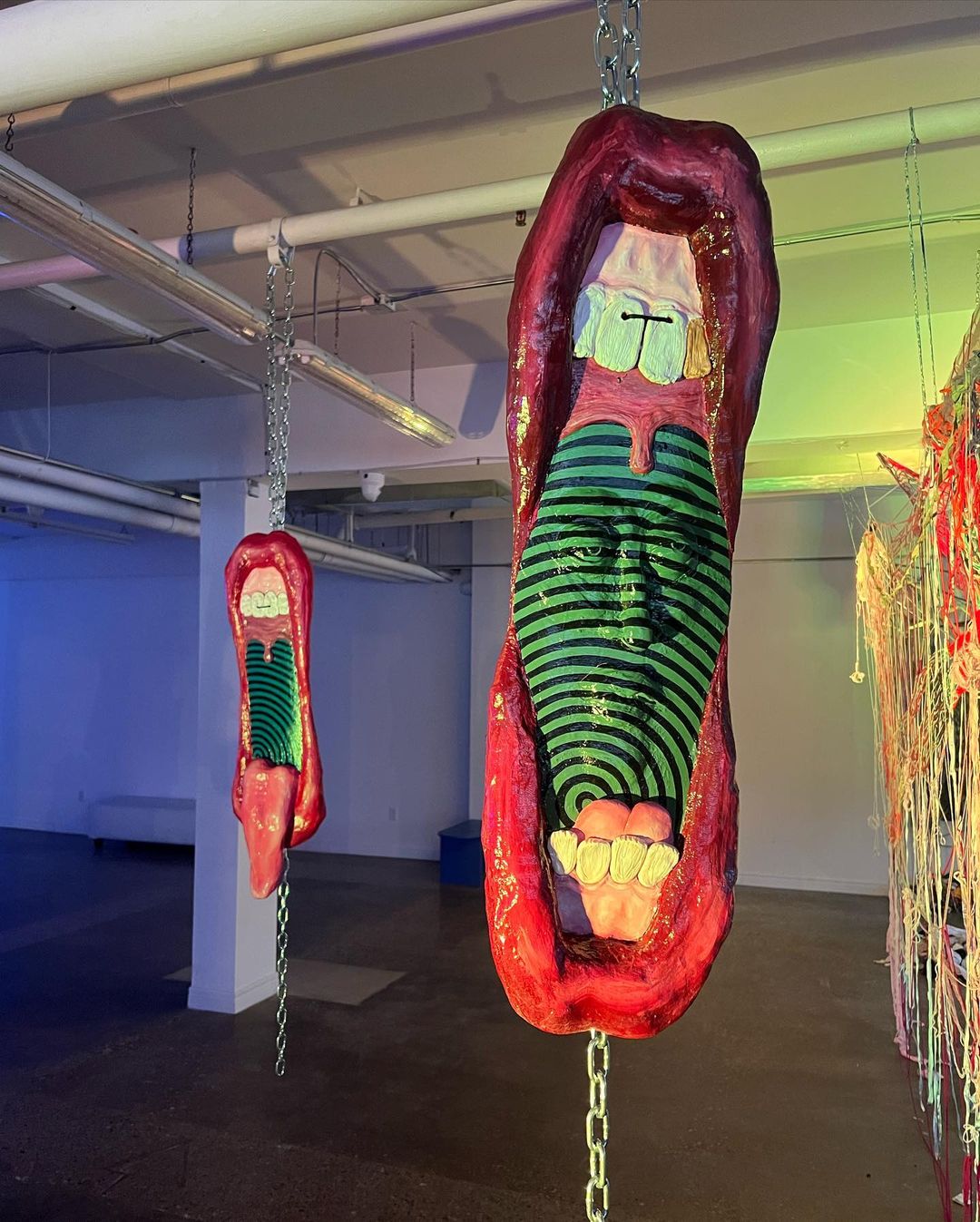
“There really is a barrier with showcasing art and art spaces for a lot of the typical art that we are around, versus what galleries are constantly putting up, as well as having spaces that are accessible to everybody.”
What is the definition of art? Sarah mentioned licensing and bylaws in an attempt to control what is considered artistic. With a DJ by the back wall, a tulle-draped pole stage, the sound of a tattoo gun buzzing, and the sweet smell of alcohol filling the air in, they were told this was more of a club than an art show. The Toronto art scene is generally more corporate, with government funding driving it. Art can be defined as the expression or application of human creative skill and imagination. What keeps tattoos, DJing, and even pole dancing from being included in that definition? Sarah spoke openly about bylaws and answered questions about what constitutes art worthy of a gallery. They said, “I think just like having a nice amalgamation of different forms of art are often overlooked, that are often like, seen as too radical to be considered fine art.”
However, if one looks at David of Michaelangelo, stumbles upon Cranach’s Venus and Cupid, or reads Goblin Market by Christina Rosetti, they can see that nudity and sexuality have been present in art for centuries in the fine art world. Nudity and sexuality aren’t new topics for artists to discuss, so what made Organized Chaos so unique? “We gave somebody a space and are like, ‘you can do anything with space,’ we’re not diminishing people. There is very much a stigma behind what is considered art, and what’s considered appropriate art for large audiences,” they explain.
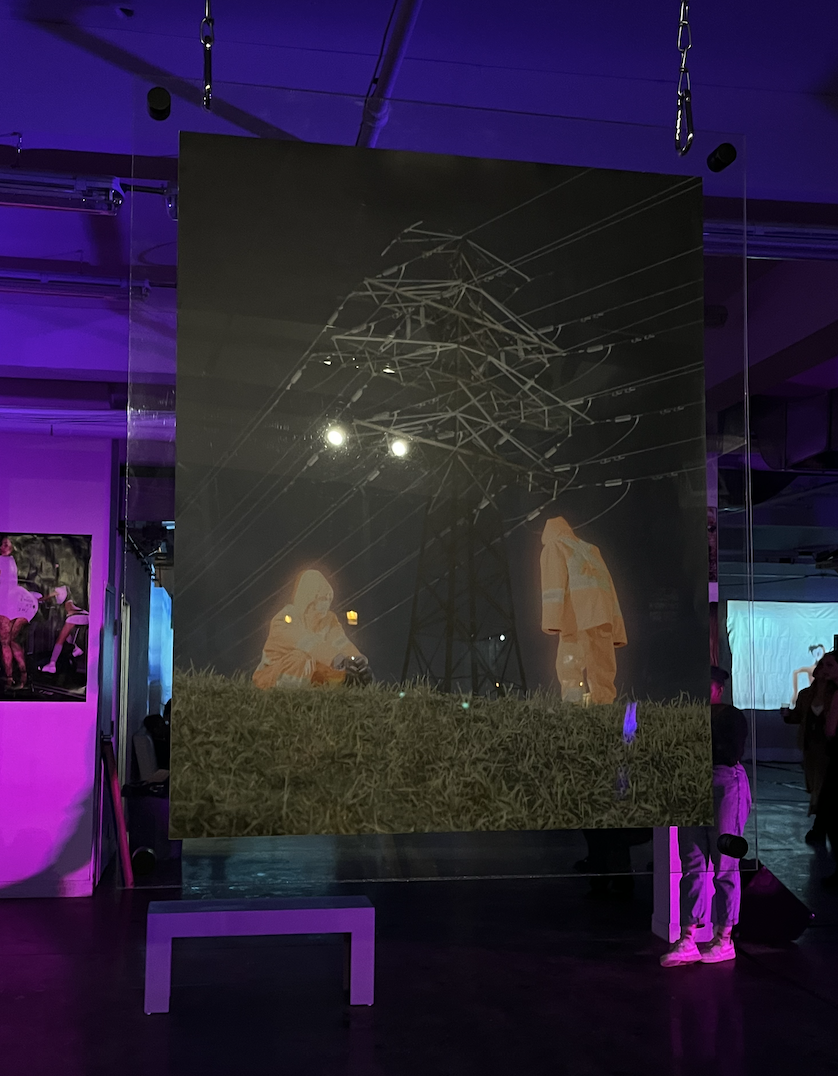
There is a palpable sense of trust in the gallery space. These organizers have created a safe space for communities that are frequently underrepresented in the arts.
Art has always been viewed as a political act. It doesn’t matter if it’s about ownership, who the creator is, or what they’re creating. Whether one chooses to acknowledge it or not, being an artist can be a political act in and of itself. In a room full of creatives, Sam Yang spoke about this being his first show in seven years. As he and many other artists have stated, the capitalist desire for monetization and clout can overrun the art world. “Honestly, when I first met the creatives of Toronto, and the entertainment industries in Toronto, I got really anxious because I met so many creatives that had such a colder attitude,” Sam says of his seven-year hiatus. “People didn’t want to let me be where I was in my career. They didn’t want to see me grow or come up and allow me the grace of messing up and not being the most talented artists in the room, when none of us will ever be the most talented artists in the room.”
“For me, be an artist now is to really lean into what makes you who you are, what makes you different?”
Pointing to another artist in the room, Sam introduced Tam. With a giant star plush attached to her belt loops, she was sure to make an impression. Pointing out the Challah bag she designed, she spoke on fashion and runways. Leaning into the couch, she shares “My mom is Chinese and my dad is Jewish. I think coming from two different cultures, food was the one thing that I found as a way to communicate with all my families, especially because I kind of never really fit in on either side. And Challah is one of the first things I remember making at Sunday school. I also didn’t fit in at Sunday school, because I didn’t look like all the kids.”
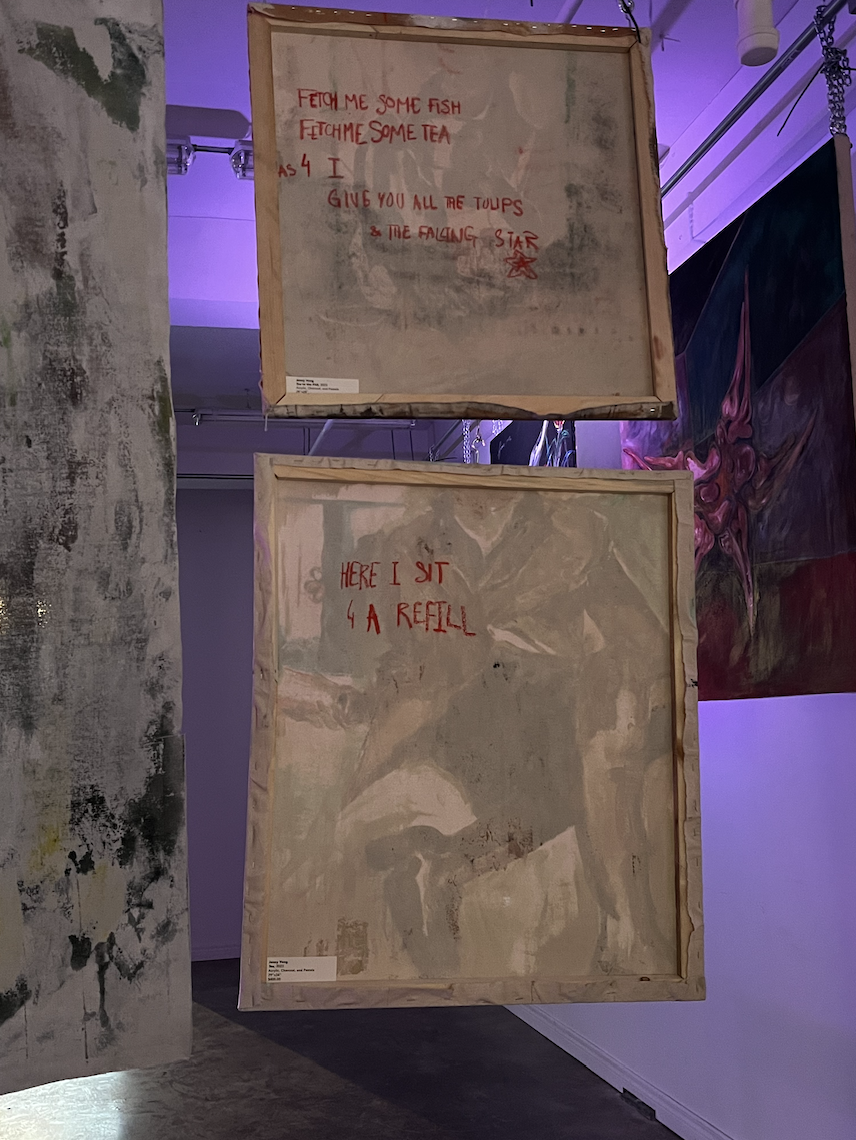
“I know what it’s like to feel like different. And I also feel like, how can I utilize that though, instead of like, being stressed out about it?”
“I think having Bonafide bring out all these Toronto based artists was really cool. And also necessary, because we’re all here, but it’s hard to get us out of our houses,” Tam says of this opportunity. Coupled with the inclusive space she’d found online in the fashion world, Tam looks thrilled as she looks at her fellow creatives and friends.
Tams brings up Bella Hadid when discussing runway model treatment: “I think what she’s doing is proving that she’s more than just a pretty face because she’s probably tired of being treated like she’s just a pretty face. And she’s like, ‘I’m a person and my dad’s from Palestine and let’s free Palestine, and you’d be like, ‘let’s talk about it.’” Tams wants to start a conversation with her designs the way those she looks up to do.
While many people praised the community and opportunities, one artist, Jill, compared it to a sacrifice. She gazed dreamily at the installation she had created, her pupils dilated. “This is my life,” she’s said when asked to describe her installation. However, the show of struggling artists working day jobs and creating for no pay cannot be ignored. There’s something almost romantic about the idea of an artist in the attic working with an almost-burned-out candle for light, surviving solely on their creativity. However, art and money are not diametrically opposed forces. Jill reminds us and herself, guiltily, that “I would be making this anyway.”
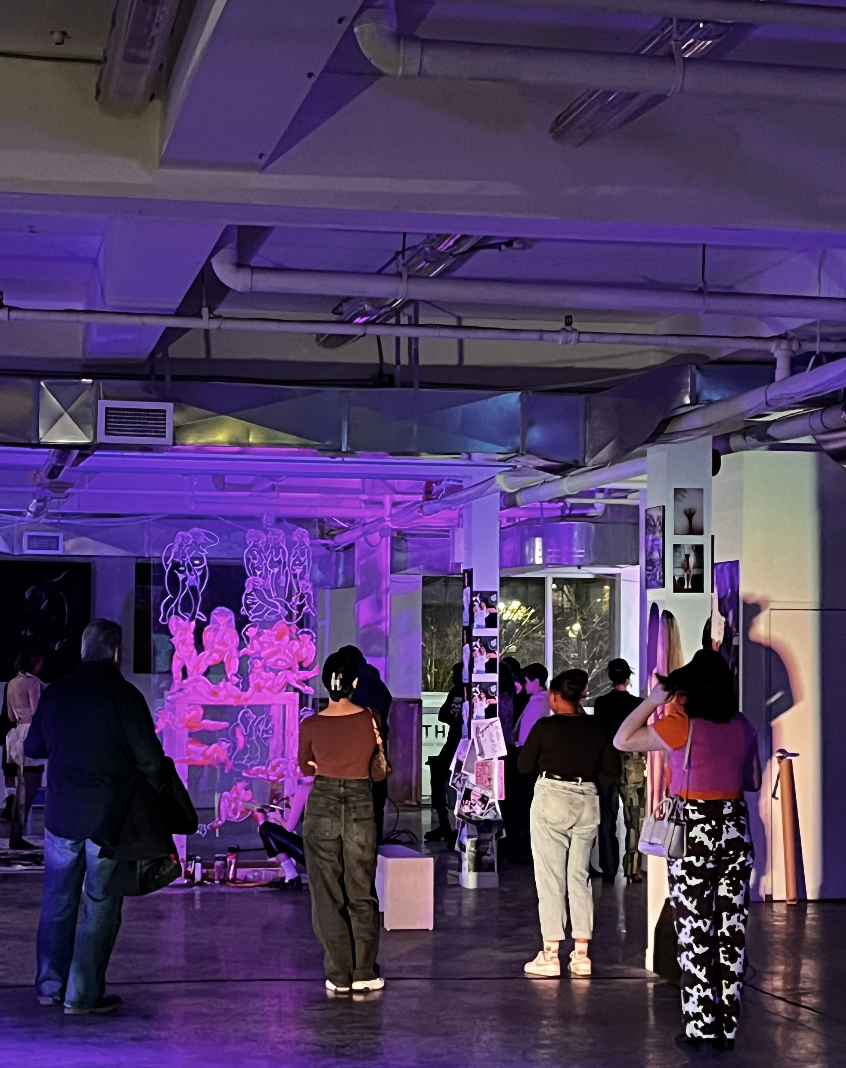
“This is the first time I take up this much space.”
Playing with her hair, she discusses wanting exposure but sacrificing the effort coming from also working a day job. Where do passion and vocation meet? Can they do it? For years, the stereotype of the starving artist has persisted. When artists make money, they are accused of selling their souls for monetary gain. But are creation and sustainability incompatible?
“I don’t know, that’s something I’ve been thinking a lot about with this show. And it’s not just even like, specifically this show, it’s all shows in Toronto. It’s like, and you know, like, even as a writer, it’s just like, in this kind of thing, it’s like, it feels like it’s always a sacrifice to like, show from like, a money sense, but I don’t know.”
Once again, the artists are astounded by how those around them interact with their works. “It means the world to me to have people here and be able to experience this and like, at the end of the day, that’s what it’s about,” Jill says.
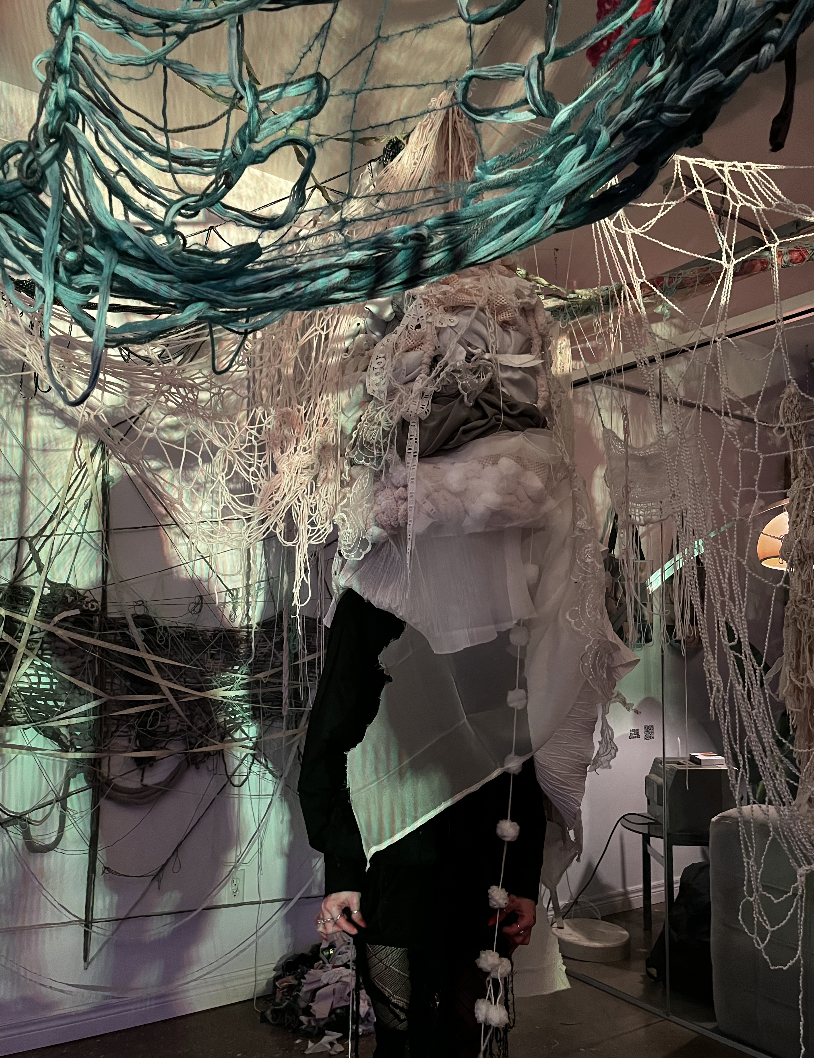
She, too, mentions the distance that artists feel from the Toronto art scene. She says that, in her experience, “Toronto can be very, almost corporatized and everything is trying to be like something really big and clouty and it’s all about who you are and who you know, and what you’re wearing and all this stuff.”
It seems that though each artist spoke on struggles with identity, background, and monetization, all these artists experienced the community of Bonafide. Through shaking legs, fidgeting fingers, and twisting their hair until it comes out in strands, these are people who look to create.
“I just keep making my my stuff and I like I I pray that I just put put it out and like, I know that that stuff will come back in my favour.”
Cover photo by @evvrlyn

